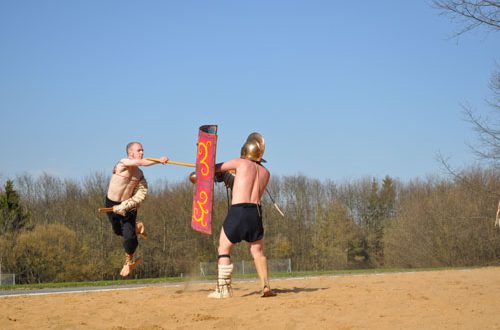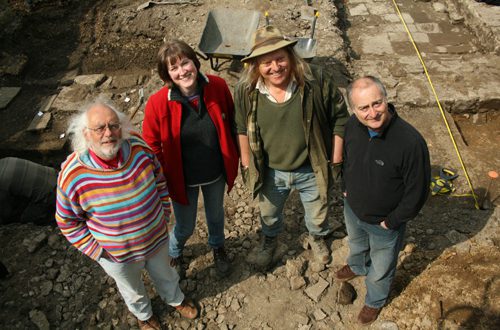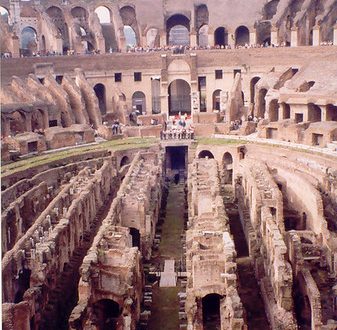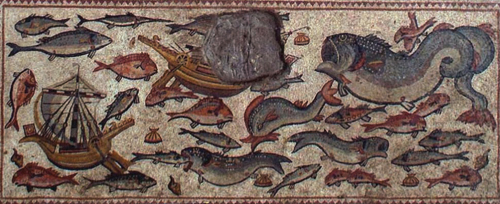 This weekend a Roman-era fourth century mosaic in the Israeli city of Lod, or Lydda, about 20 km south-east of Tel Aviv, will be on view to the public for only the second time since its discovery. The Lod mosaic, dating back 1700 years, is being uncovered and prepared for restoration. It is described as one of the most magnificent and largest mosaics ever revealed in Israel by the Israel Antiquities Authority (IAA), the government agency responsible for its conservation.
This weekend a Roman-era fourth century mosaic in the Israeli city of Lod, or Lydda, about 20 km south-east of Tel Aviv, will be on view to the public for only the second time since its discovery. The Lod mosaic, dating back 1700 years, is being uncovered and prepared for restoration. It is described as one of the most magnificent and largest mosaics ever revealed in Israel by the Israel Antiquities Authority (IAA), the government agency responsible for its conservation.
For those who can’t make it to Lod in person for 11-12 July, it will also be possible to see a live video stream of the mosaic here.
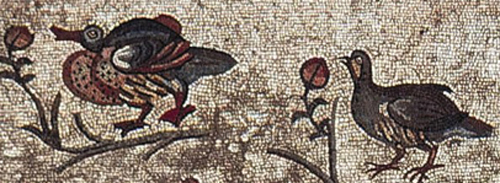 It is extremely well preserved and covers an area of 180 square metres, made up of more than two million individual stones. It shows vivid colourful scenes of fish, ships, birds and hunting scenes of native African animals. According to a spokesperson for the IAA, the mosaic is similar to others found in Tunisia and elsewhere in northern Africa.
It is extremely well preserved and covers an area of 180 square metres, made up of more than two million individual stones. It shows vivid colourful scenes of fish, ships, birds and hunting scenes of native African animals. According to a spokesperson for the IAA, the mosaic is similar to others found in Tunisia and elsewhere in northern Africa.
The mosaic was originally discovered in 1996 during an excavation led by archaeologist Miriam Avissar on behalf of the IAA. Since then, there has been much discussion about how it should be preserved and presented. A US$2.5 million donation from the Leon Levy Foundation and Shelby White – Chairman of the Friends of the Israel Antiquities Authority will now enable a two-year restoration programme to take place and there are plans for a Lod Mosaic Archaeological Centre to be established at the original site in 2012. During the two-year conservation project, a section of the mosaic will be sent to the Metropolitan Museum of Art in New York for public display, but will then be returned to Lod to be displayed with the rest of the mosaic. It is thought the mosaic will be a star tourist attraction for Lod and will become an important stop on Israel’s tourist trail.
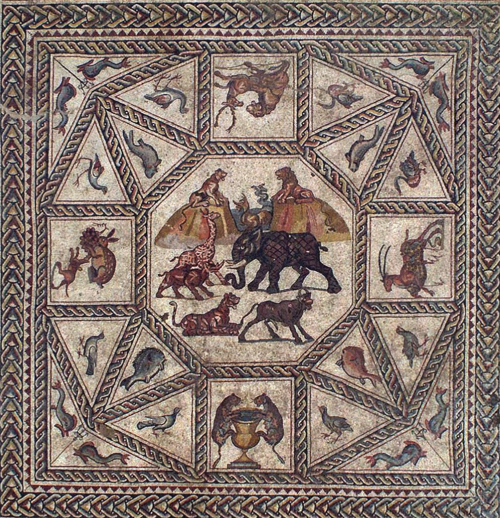 Previously known as Lydda, the city of Lod re-assumed its Hebrew name in 1948 when it became part of Israel. It is also home to Tel Aviv’s Ben Gurion international airport. The city, which has evidence of settlers as far back as 5,600 BC, was subject to Roman occupation of Judaea during the first century AD and was variously destroyed, rebuilt and conquered by Roman emperors. Vespasian took control of the city in 68 AD as part of his military campaign in Judaea, which culminated in the siege and sack of Jerusalem. Nearer to the period during which the Lod mosaic is thought to have been laid down, Septimus Severus built a new Roman city on the site, naming it Colonia Lucia Septimia Severa Diospolis. This was in 200 AD, possibly 100 years before the Lod mosaic was actually created. By around 300 AD, most of the city’s inhabitants were Christian and one of Diocletian’s guards was martyred at Lod in 303 AD for refusing to deny his Christian faith the Church of Saint George was built in his memory, a reconstruction of which still stands today.
Previously known as Lydda, the city of Lod re-assumed its Hebrew name in 1948 when it became part of Israel. It is also home to Tel Aviv’s Ben Gurion international airport. The city, which has evidence of settlers as far back as 5,600 BC, was subject to Roman occupation of Judaea during the first century AD and was variously destroyed, rebuilt and conquered by Roman emperors. Vespasian took control of the city in 68 AD as part of his military campaign in Judaea, which culminated in the siege and sack of Jerusalem. Nearer to the period during which the Lod mosaic is thought to have been laid down, Septimus Severus built a new Roman city on the site, naming it Colonia Lucia Septimia Severa Diospolis. This was in 200 AD, possibly 100 years before the Lod mosaic was actually created. By around 300 AD, most of the city’s inhabitants were Christian and one of Diocletian’s guards was martyred at Lod in 303 AD for refusing to deny his Christian faith the Church of Saint George was built in his memory, a reconstruction of which still stands today.
Photos courtesy of the Israel Antiquities Authority.

